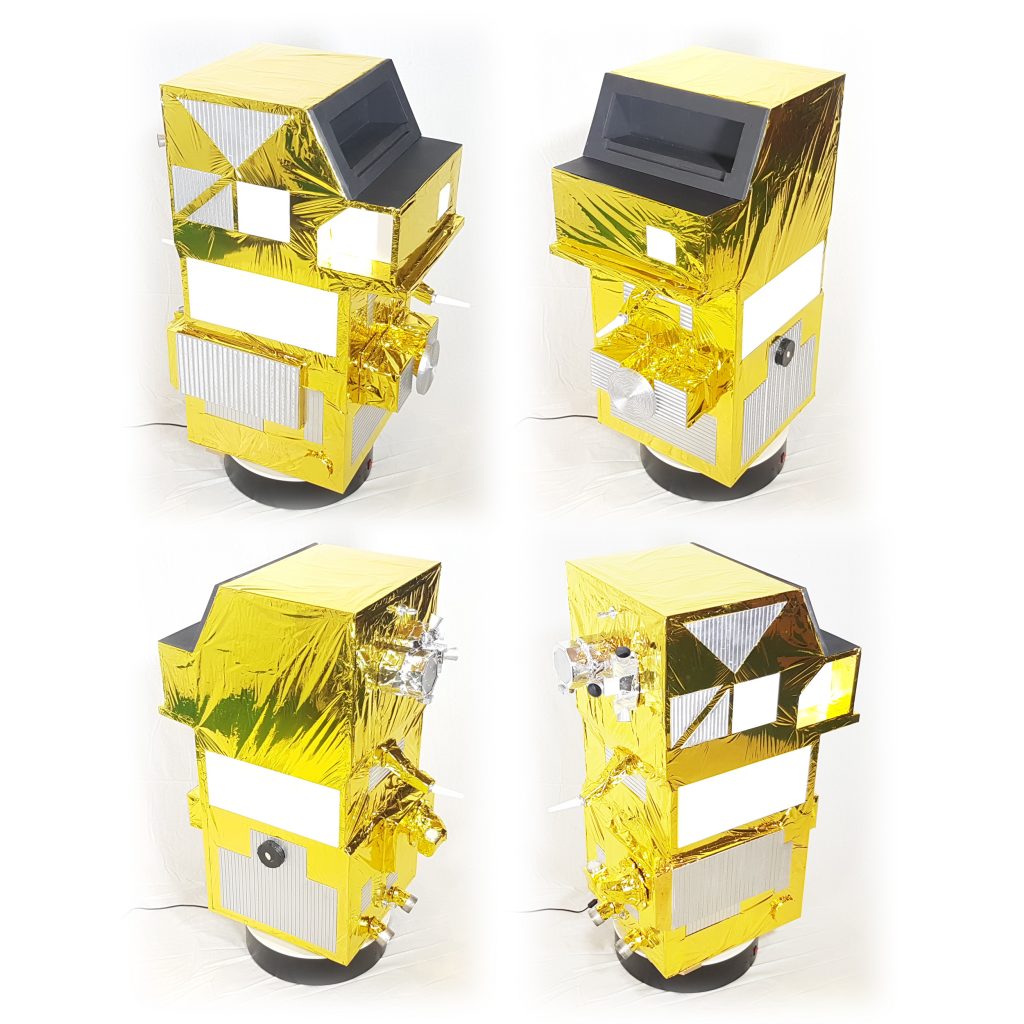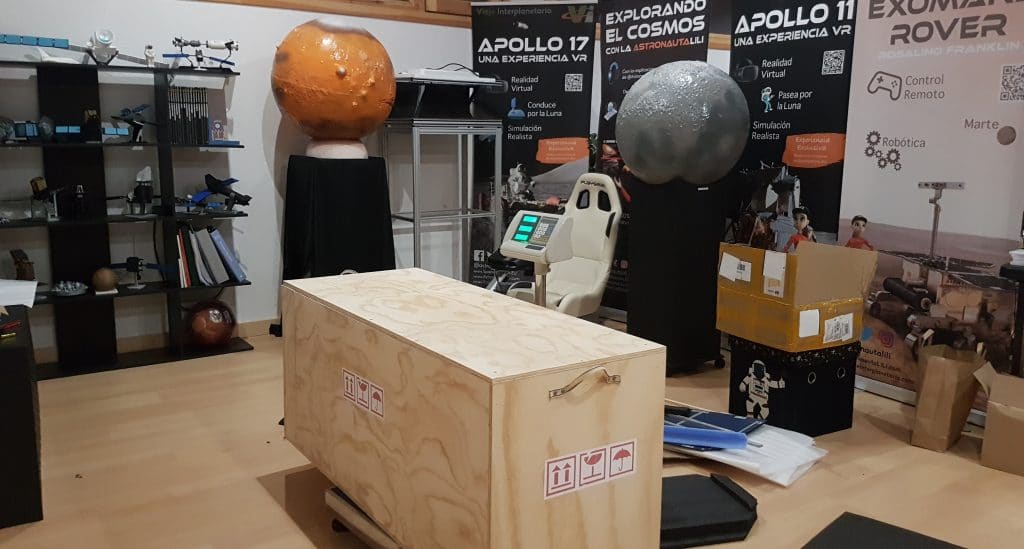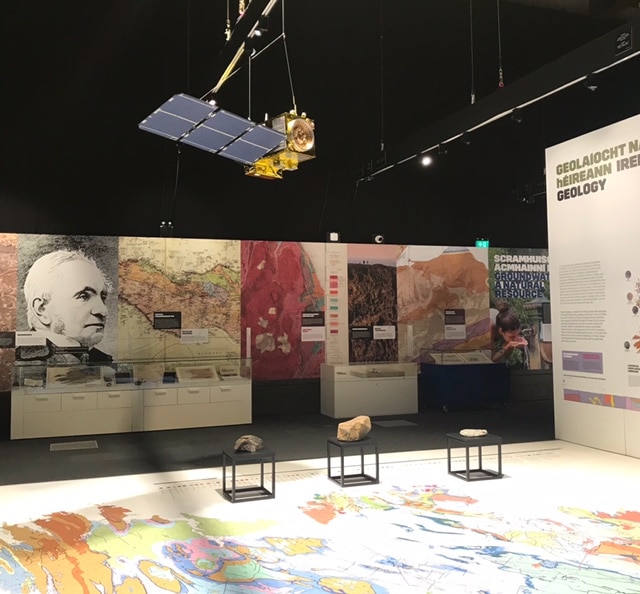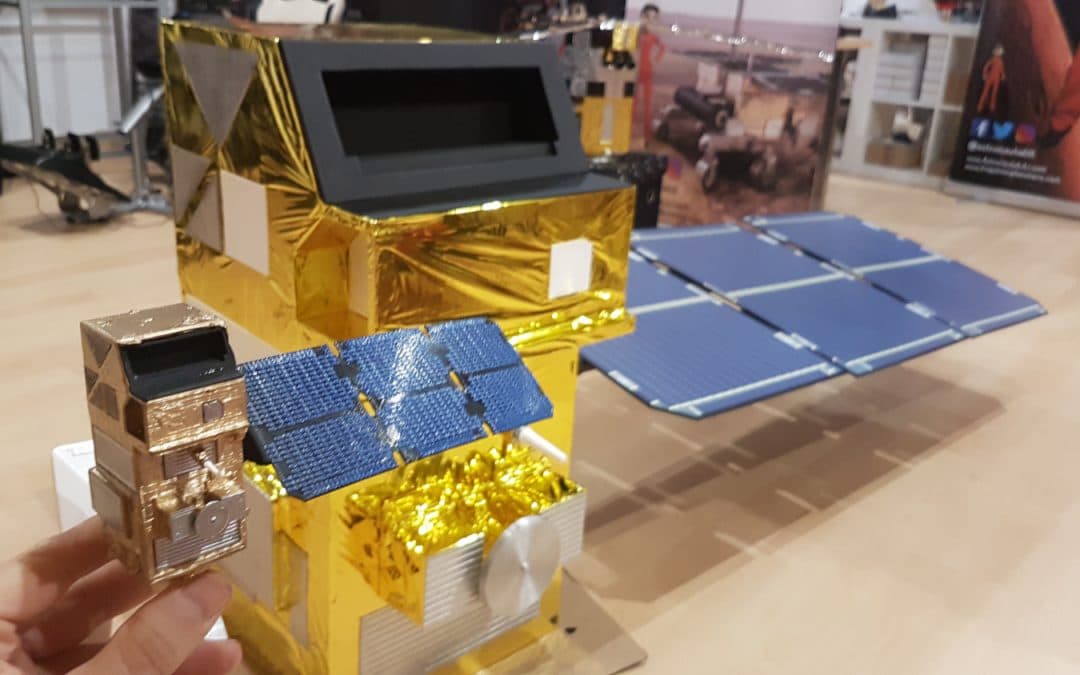The Copernicus Sentinel-2 mission comprises a constellation of two polar-orbiting satellites placed in the same sun-synchronous orbit, phased at 180° to each other. It aims at monitoring variability in land surface conditions, and its wide swath width (290 km) and high revisit time (10 days at the equator with one satellite, and 5 days with 2 satellites under cloud-free conditions which results in 2-3 days at mid-latitudes) will support monitoring of Earth’s surface changes.
This Sentinel-2 Mission Guide provides a high-level description of the mission objectives, satellite description and ground segment. It also addresses the related heritage missions, thematic areas and Copernicus services, orbit characteristics and coverage, instrument payload, and data products.
About the Sentinel 2 satellite scaled model
This satellite created for ceiling for the Geological Survey Ireland.
The final size was 1:4 to fix the final ceiling conditions of the center. The satellite size in this scale is 1,5 meters (solar array) and 1 meter long (body), was created with a wood core, 3D printed parts, 2D printing, metal and ceiling metal support points. It weight was close to 20Kg.


For the construction all the pieces are created and design from scratch, this instruments goes with magnets so it is easy to fix and repair any of the external instruments, the solar array comes with a strong wood/aluminum holder and can turn 360 degrees to fix in the correct position.





